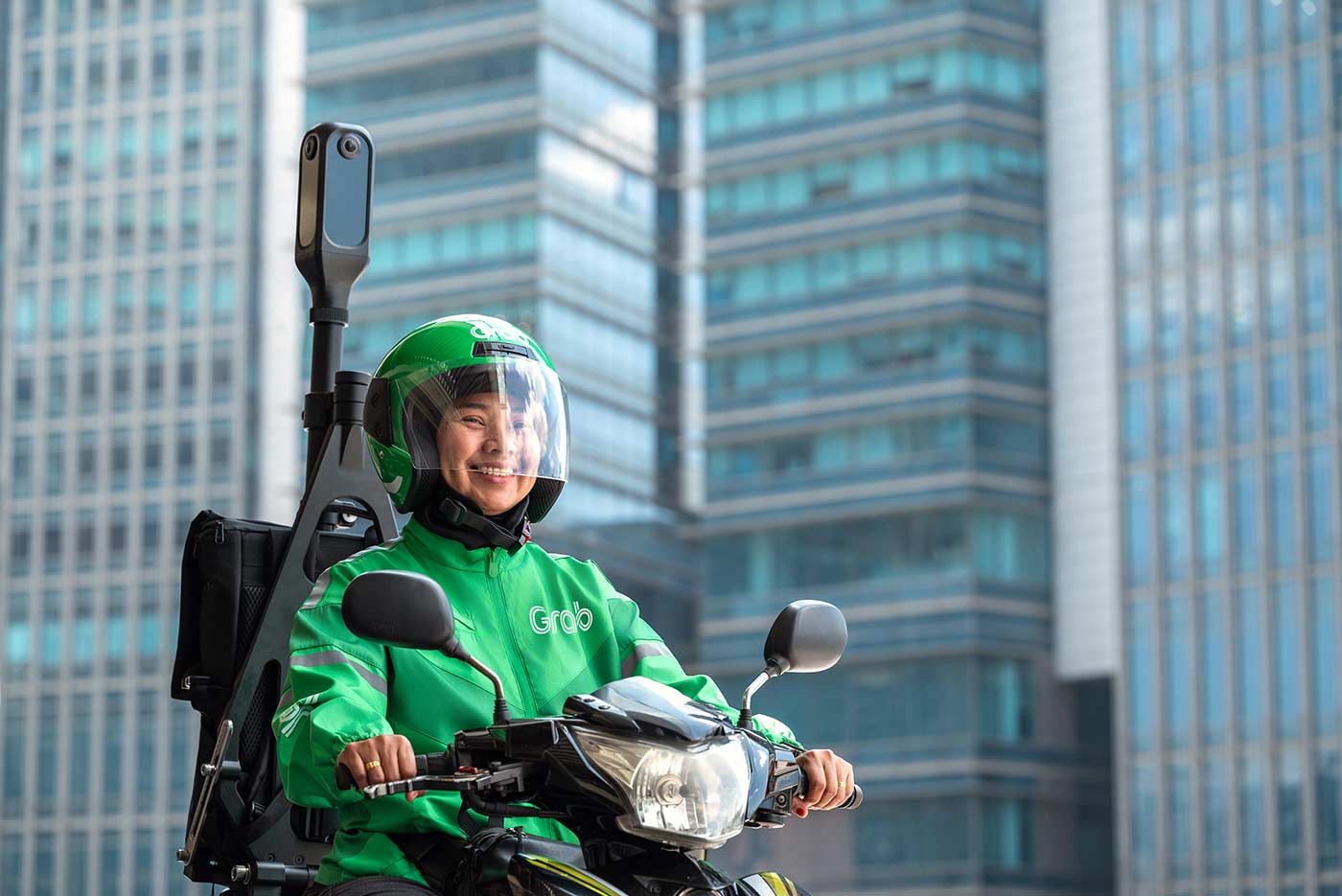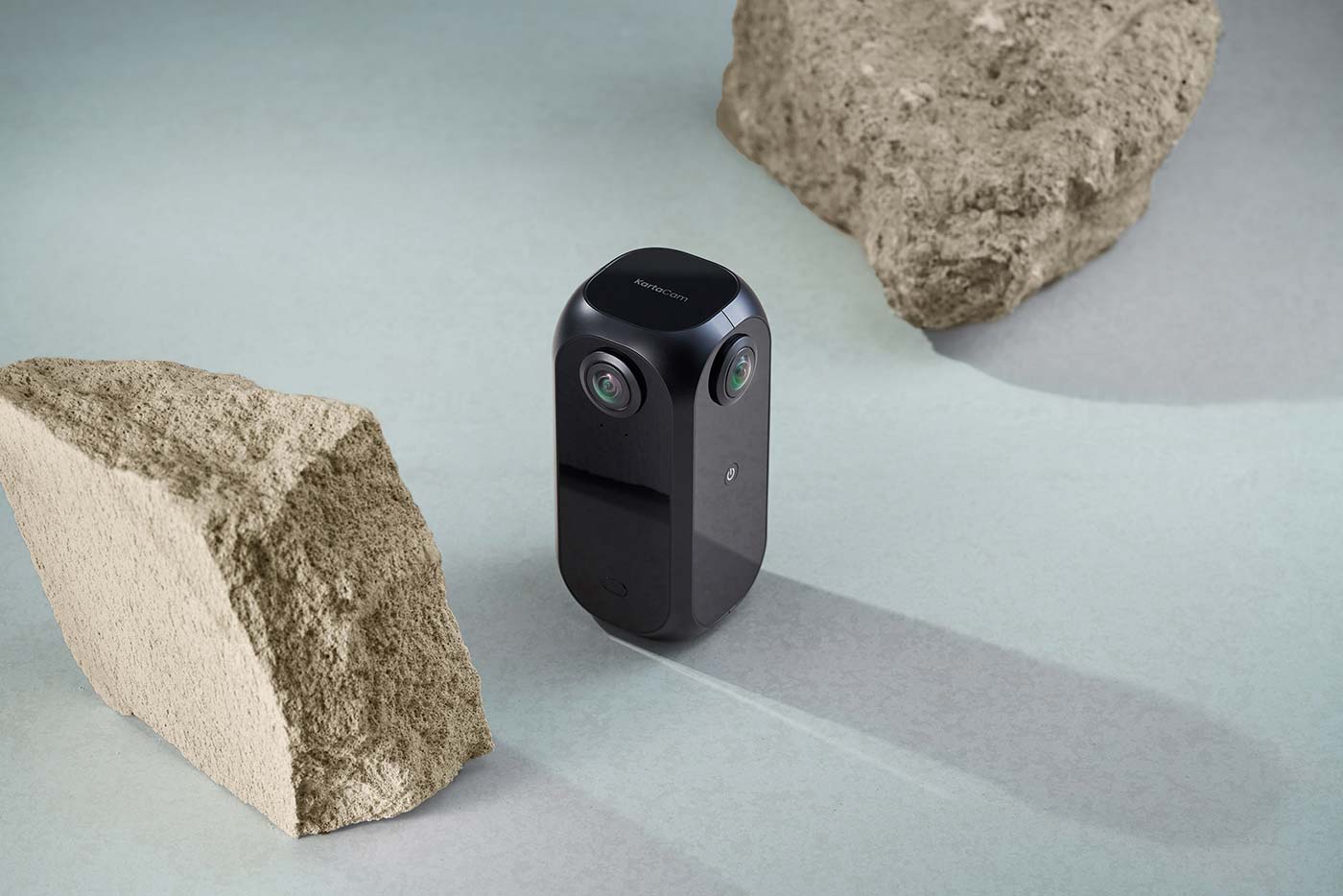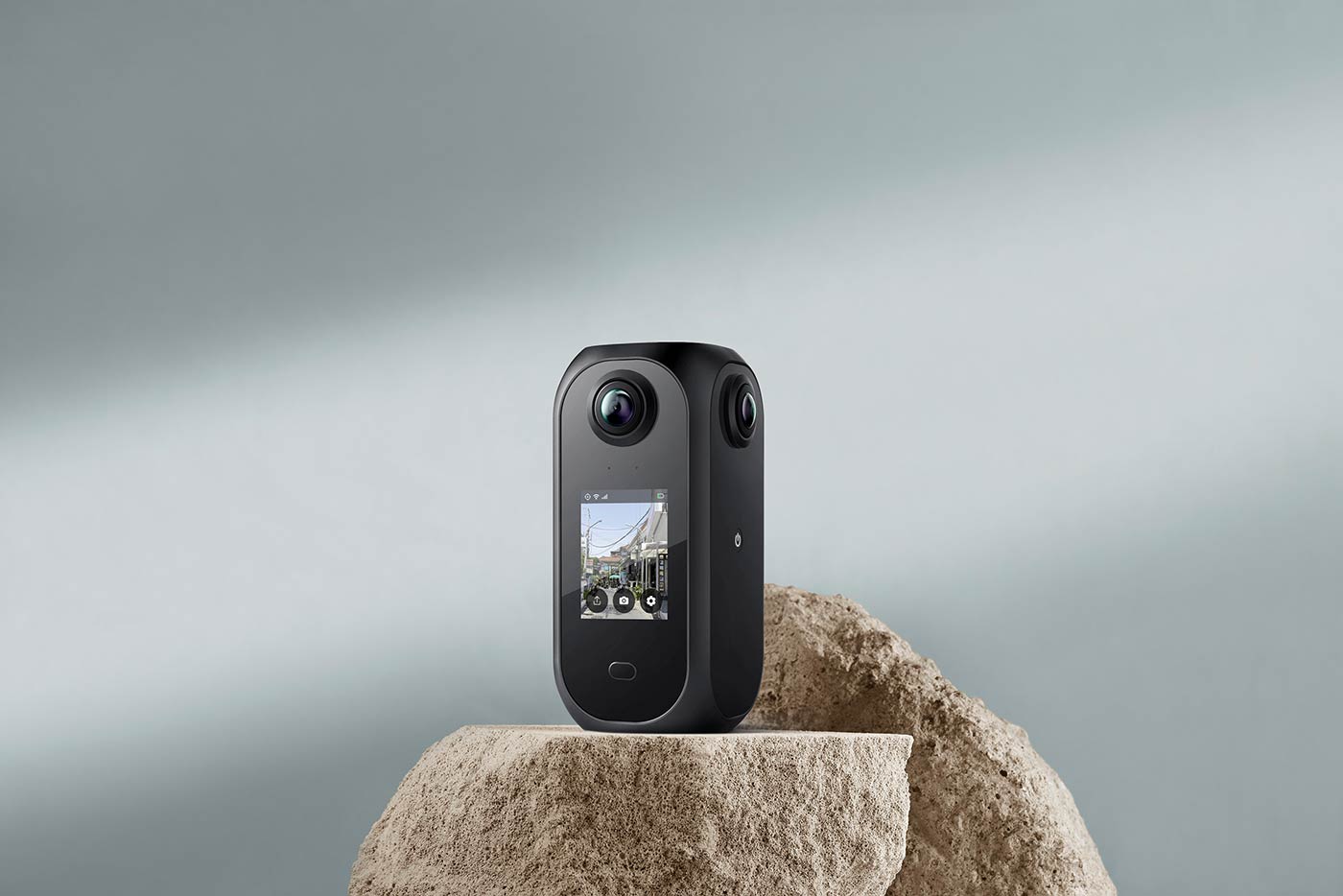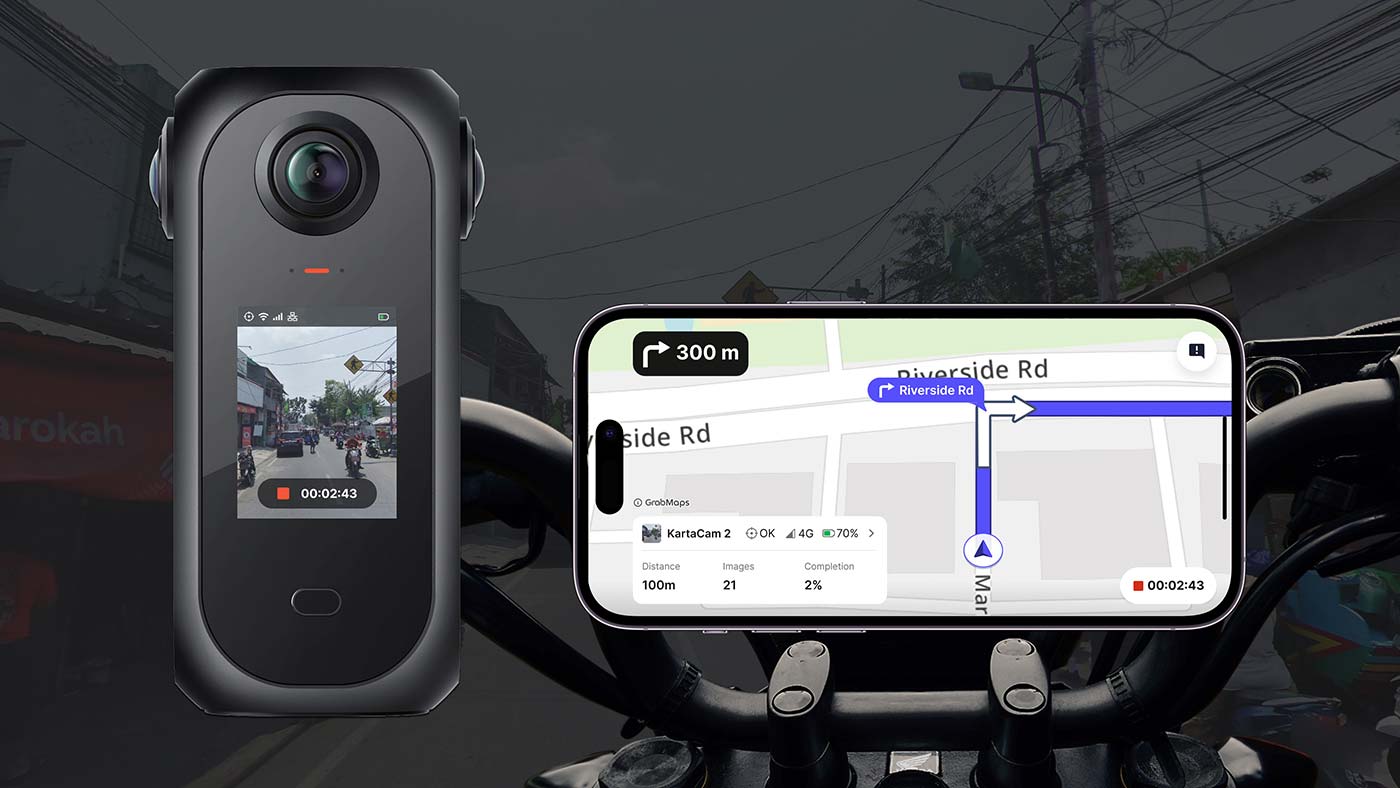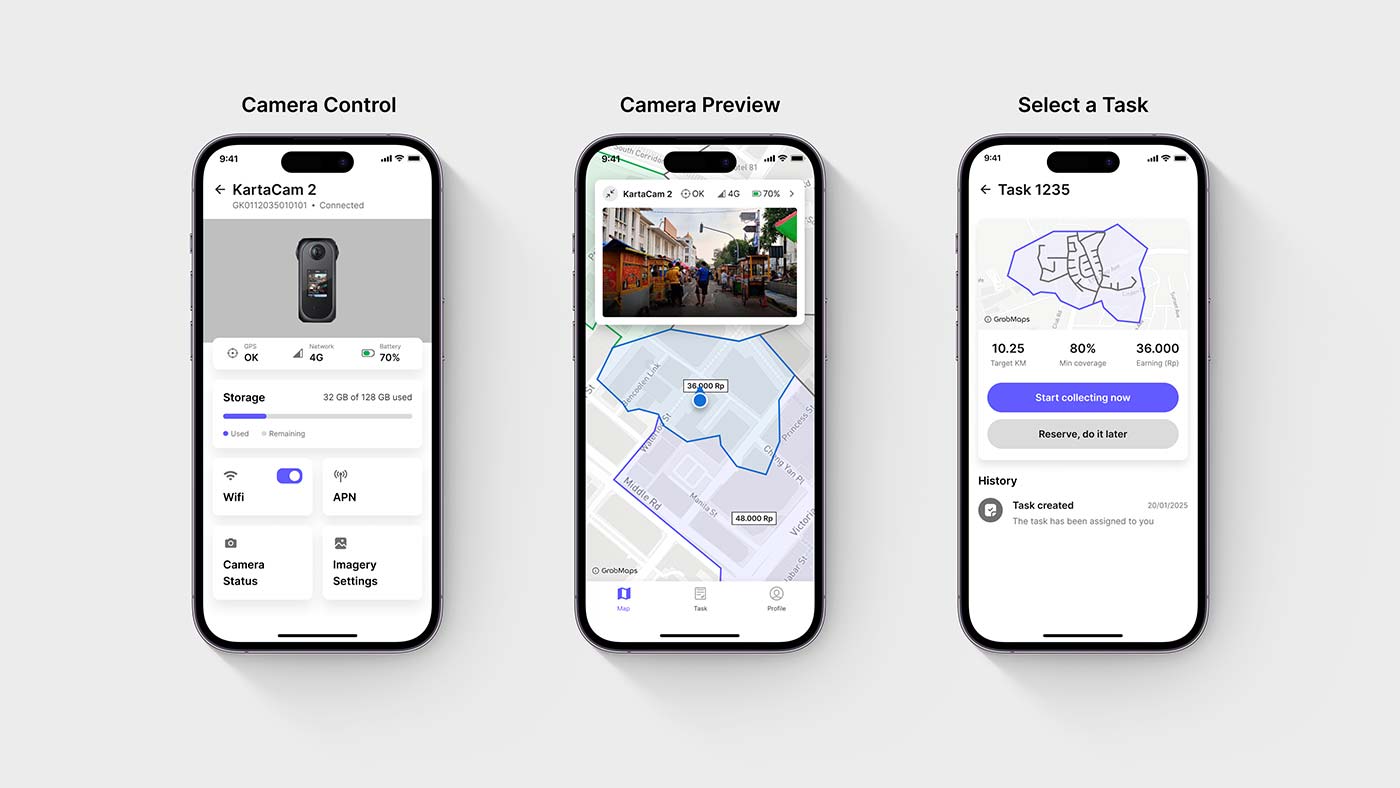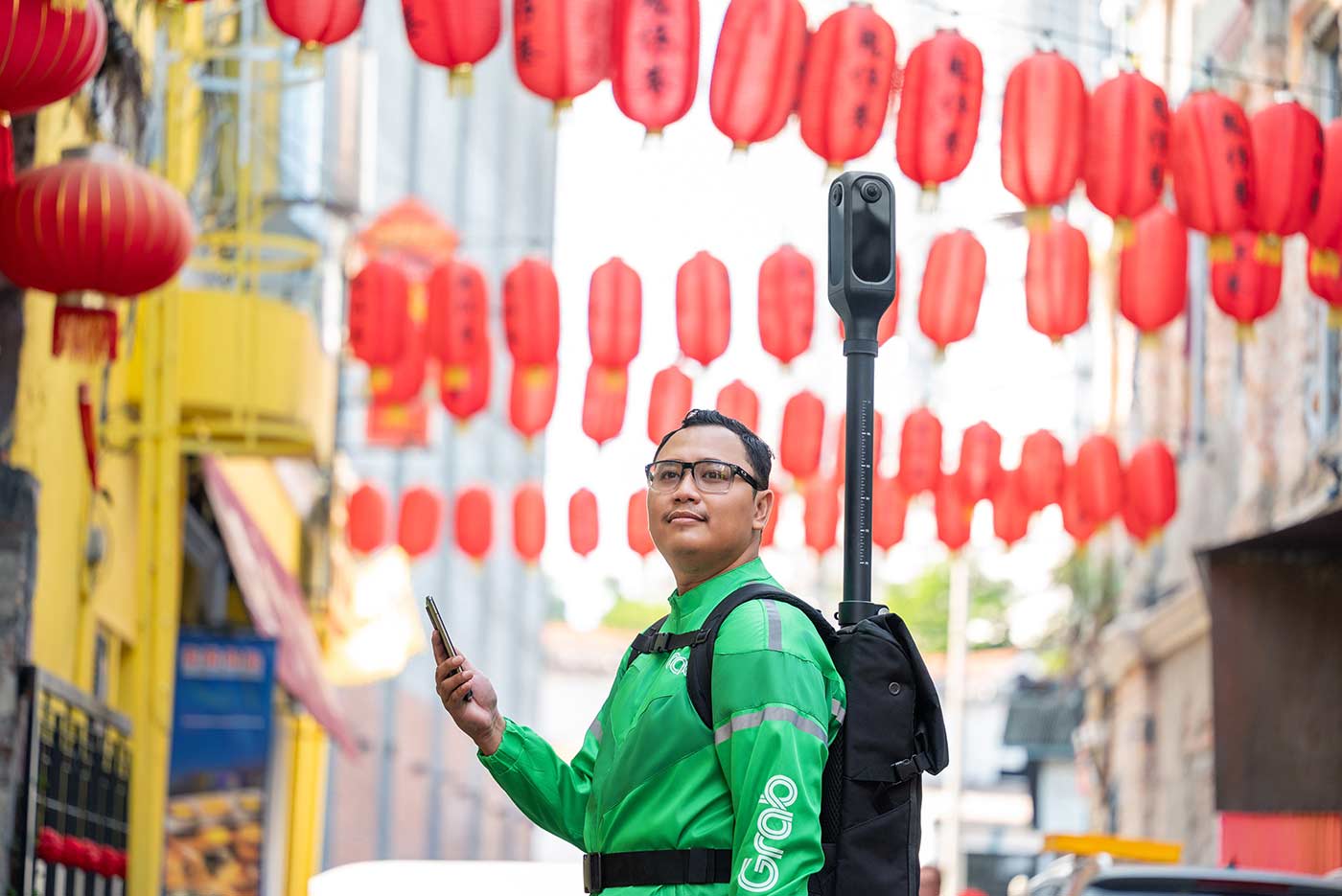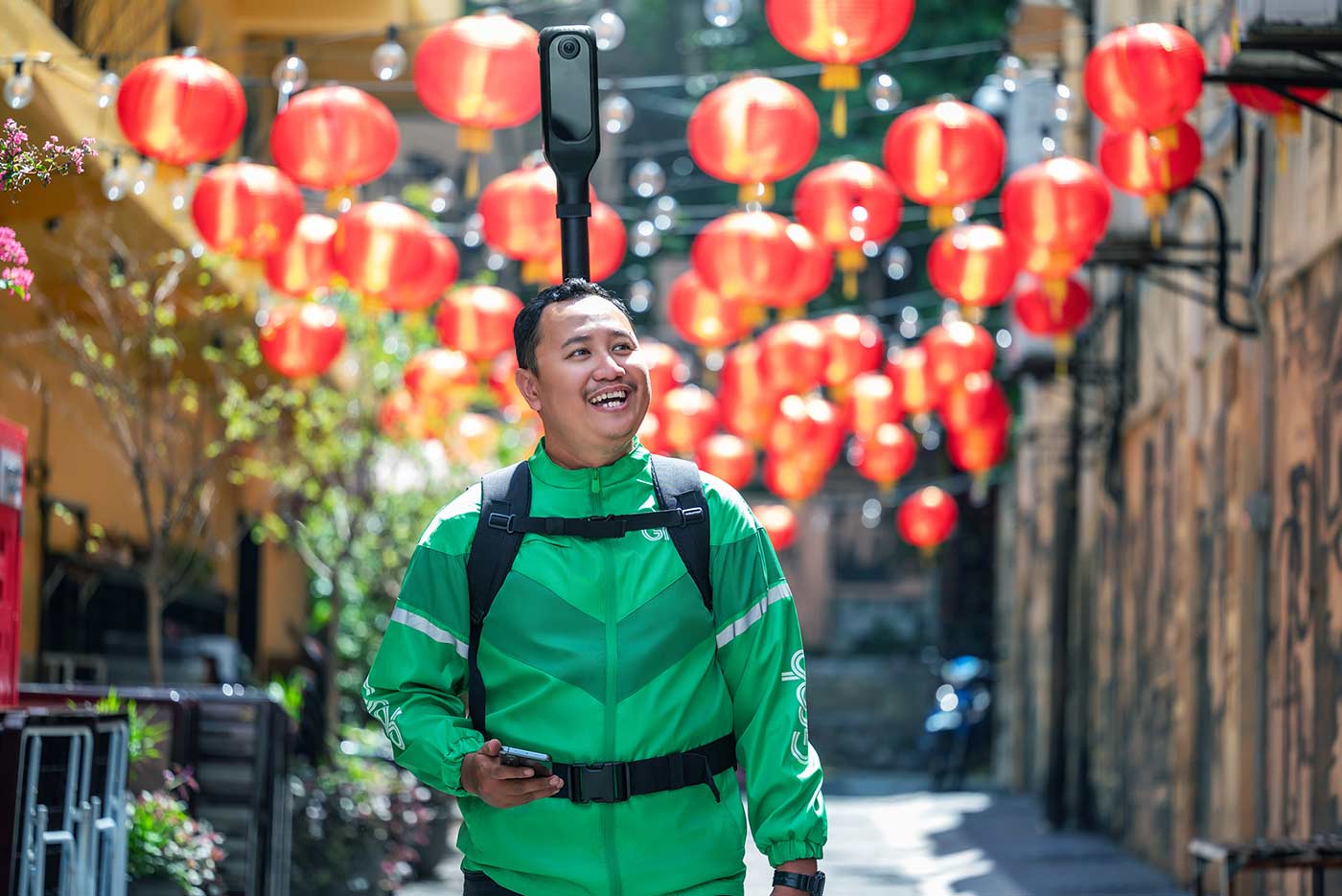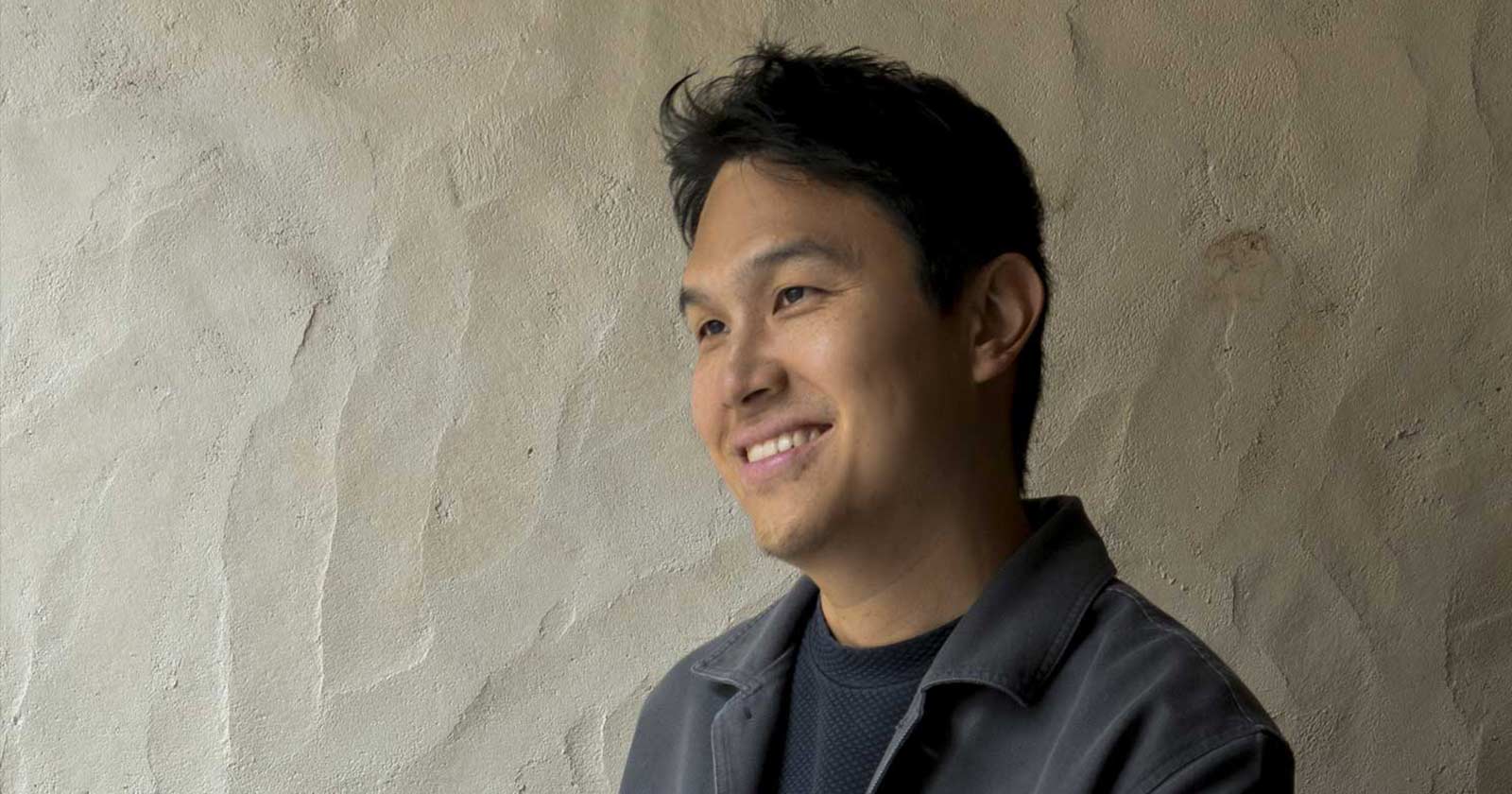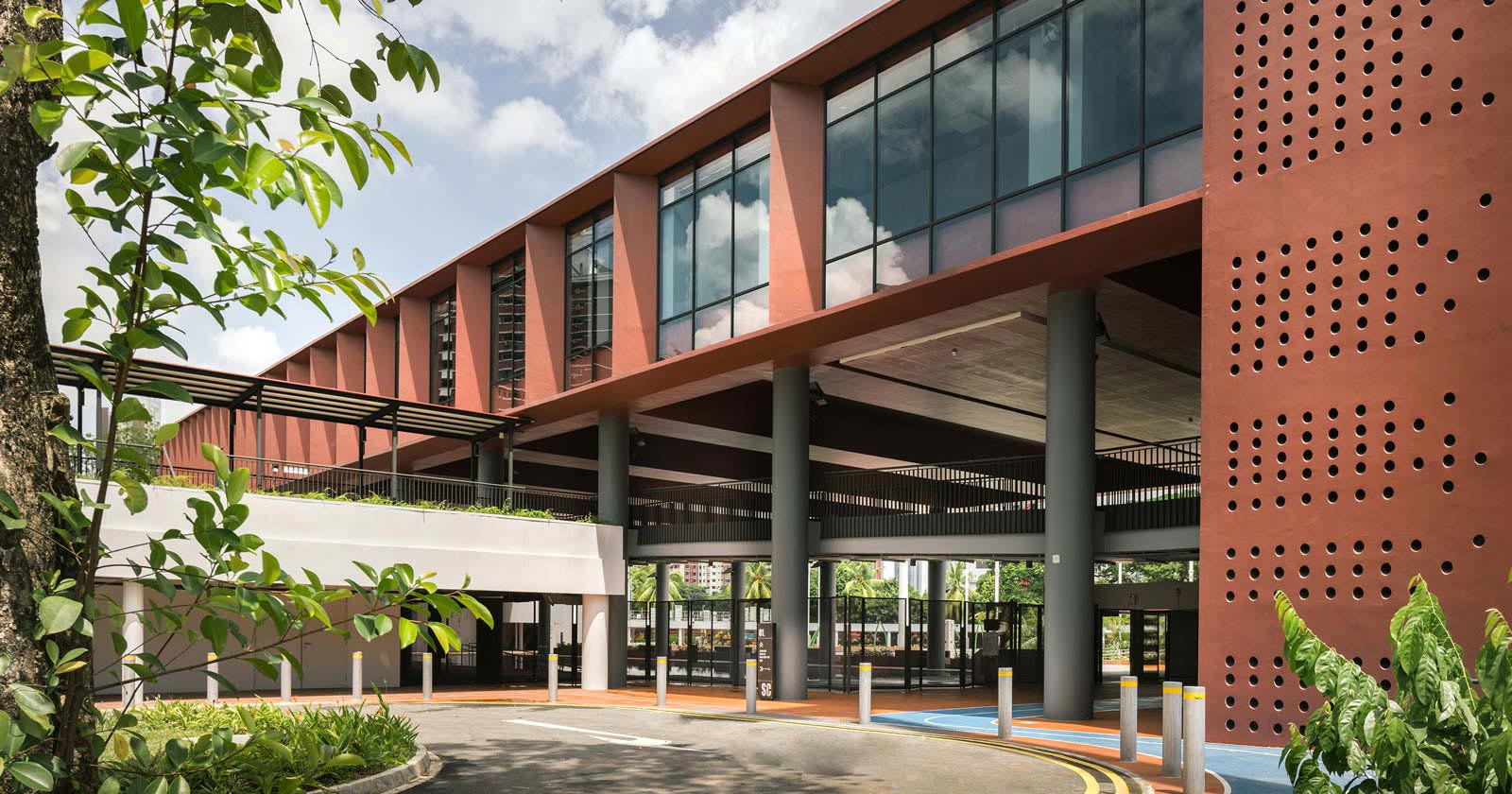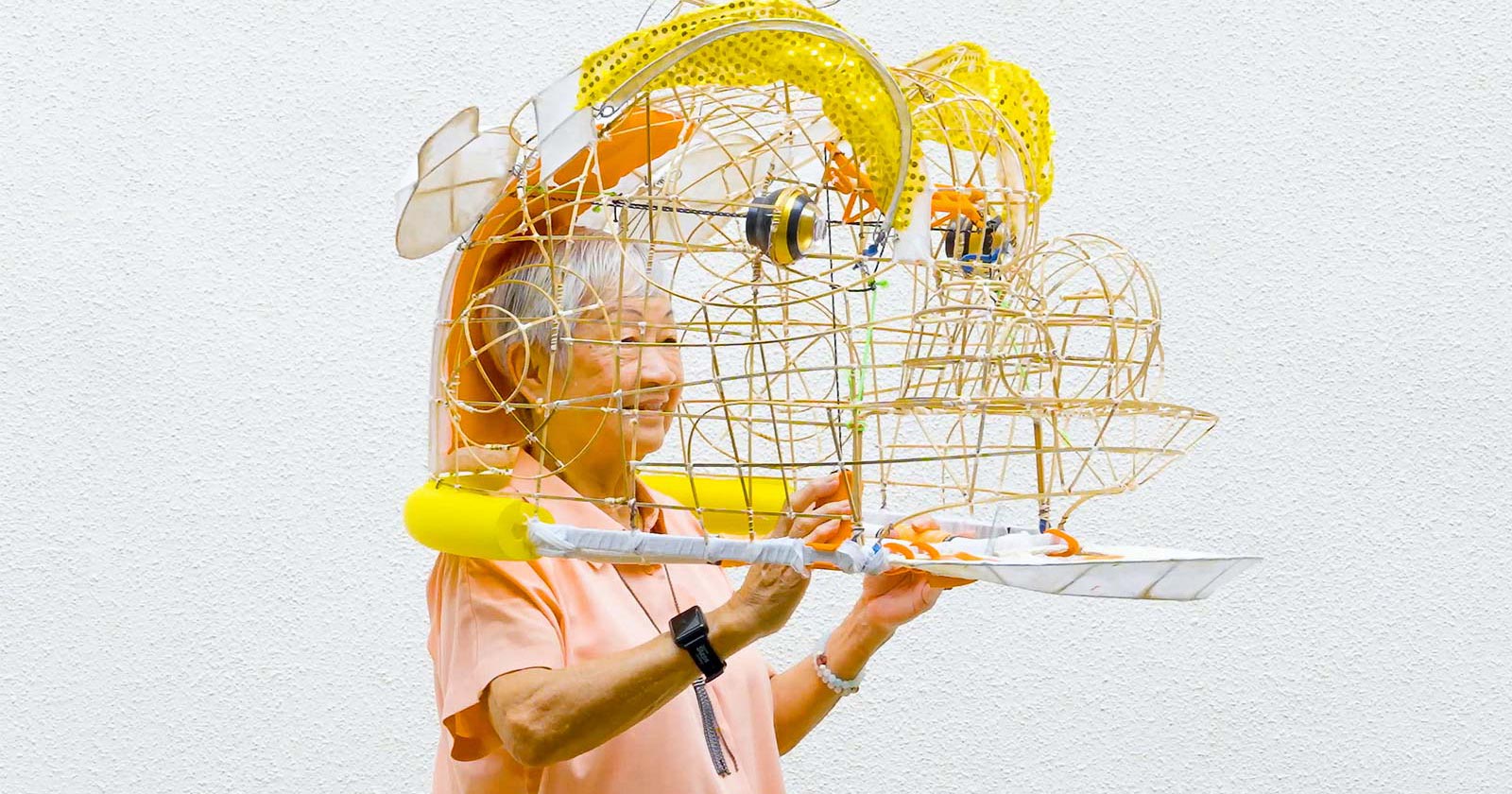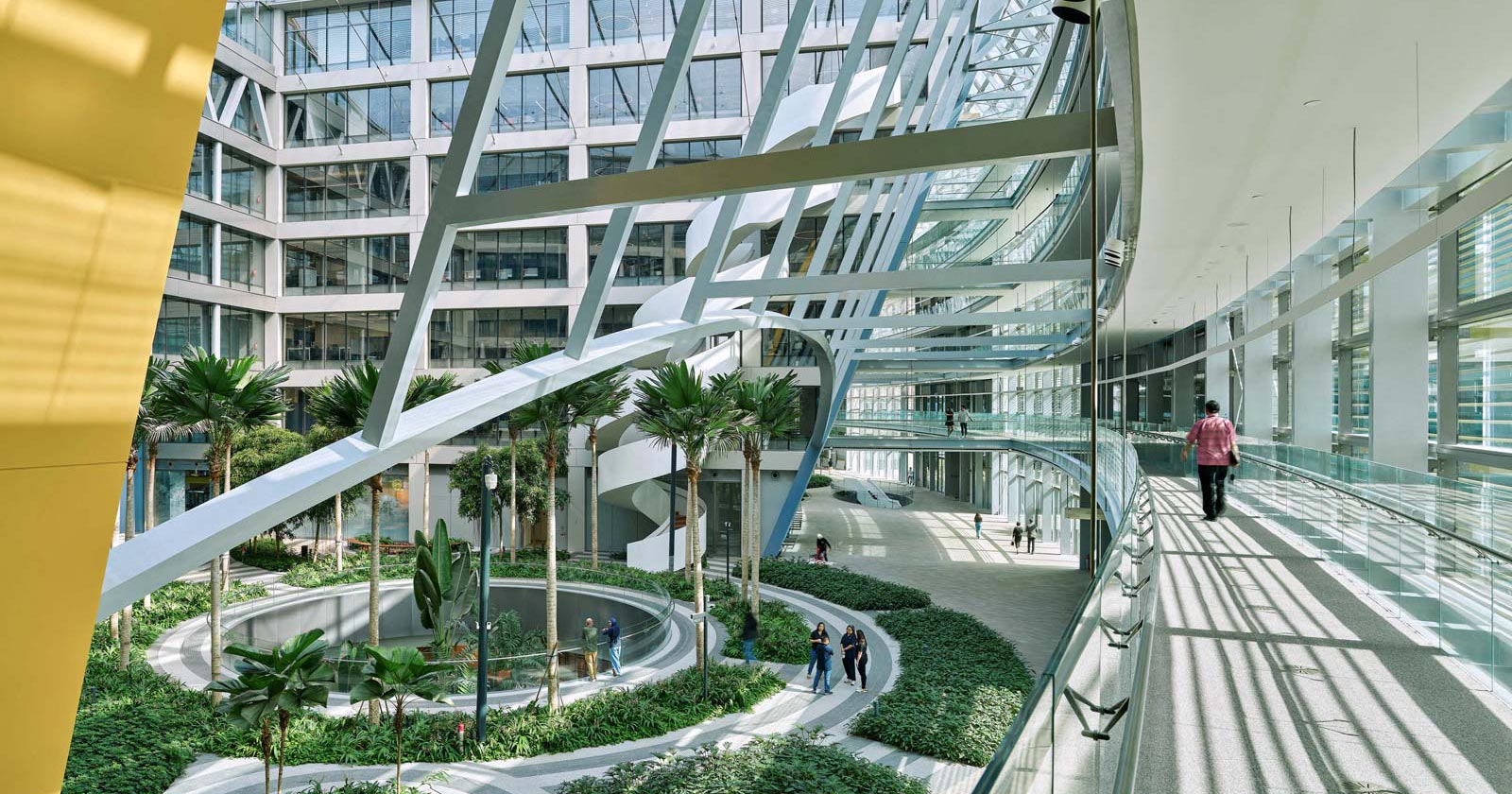DESIGN OF THE YEAR 2025
KartaCam 2
Grab
CONTACT
[email protected]
Anyone who has explored the cities of Southeast Asia on foot is likely to have ventured off the busy major roads. This inevitably means navigating back alleys and narrow thoroughfares that don’t show up on the map because traditional mapmaking methods, using four-wheeled vehicles, can’t reach them. It’s a particularly Southeast Asian problem.
For delivery drivers in the region, many of whom use motorbikes and scooters, accessing these narrow alleyways can cut minutes from a journey. Over time, that can translate into considerably more income. Grab saw the opportunity to build on its existing mapping and service infrastructure to document the unmapped. It developed what may be the world’s smallest and lightest AI-powered mapmaking camera system.
With a versatile mounting base, KartaCam 2 can be easily and quickly attached to two- and four-wheeled vehicles or worn on the body with a backpack. It captures 360° high-resolution street imagery and performs real-time image analysis and object detection directly from the device. The embedded technology improves upon earlier KartaCam models’ position accuracy and signal stability. To benefit a diverse population of drivers across the region, the camera pairs with a mobile application that was designed with all levels of mobile literacy in mind.
Achieving Grab’s vision for the product’s size, weight, and output quality stretched the capabilities of the design and engineering teams and the outcome was worth the effort. According to Grab, not only does KartaCam 2 address the specific issues of Southeast Asian drivers, it is 10 times cheaper than traditional cameras on the market, which can cost US$ 25,000 per unit.
Grab uses KartaCam 2 in eight countries in Southeast Asia. As it enables delivery drivers to work more efficiently, it also establishes a new income stream for them. When Grab drivers sign up as mappers, they gain access to the KartaCam 2 equipment as well as training on how to use it to boost their earnings while building map data for all.
About the Designer
The Geo Product Design team at Grab is part of Grab’s broader Design wing. The team specialises in shaping the user interface and experience of the Grab consumer app, as well as IoT products for enterprise solutions. Its north star is designing for simplicity, efficiency, and safety, so every user interaction feels intuitive, purposeful, and empowering.
The team takes the approach of combining Grab’s design principles with deep on-the-ground immersion to understand local challenges. This allows the translation of complex problems into simple, effective solutions that improve operational efficiency for drivers and partners.
Low Ko Wee is Senior Design Manager, Geo, at Grab. He leads the product design experience across Grab Maps and IoT products, shaping both industrial design and mobile interfaces for the Grab consumer superapp and the driver app. These platforms serve millions of people in Southeast Asia.
Ellen Chen Tingying is Lead Product Designer, Geo, at Grab. Her background is in both digital and IoT product design. She is strongly focused on achieving intuitive, user-centred designs.
Low, Chen, and their team were the recipients of a Red Dot Design Award in 2024 for KartaCam 2. Low was a recipient of the P*DA Design of the Year accolade in 2014 for his role in the Electrolux team that designed the Ouyi Refrigerator.
DESIGNER
Grab
Low Ko Wee, Ellen Chen Tingying, Wu Siyi, Hou Shuangquan, Song Guodong
CLIENT
Grab
DESIGNER
Grab
Low Ko Wee, Ellen Chen Tingying, Wu Siyi, Hou Shuangquan, Song Guodong
CLIENT
Grab
1MAPPING BETTER
KartaCam 2 is a small professional-grade camera system that captures 360° street imagery for mapping. It can be mounted on vehicles or carried comfortably with a backpack.
2OPTIMISED EXPRESSION
The camera unit was designed with clean lines and smooth curves. The design team’s aim was to achieve a sophisticated yet minimal aesthetic with excellent build quality.
3THE NECESSITIES
The camera’s minimal aesthetic was applied holistically. The hidden display and light-emitting diodes illuminate only when there’s a need to communicate information.
4TURN BY TURN
The mobile application pairs with the camera unit via Bluetooth. The integration of hardware and software enables mappers to collect street imagery efficiently with the support of a navigation system developed in-house.
5TAP AND GO
The mobile application puts job management and camera control at the driver’s fingertips. It allows the driver to control camera functions, preview the camera position, and plan a mapping route by selecting a task from the map.
6MULTIPLE MODES
Its versatile mounting base makes KartaCam 2 compatible with a variety of mapping modes, including on foot, two- and four- wheeled vehicles.
7LOCAL NUANCES
Grab aimed to design a hyperlocal camera that would work effectively in Southeast Asia, considering nuances such as narrow roads navigable only by motorbikes, as well as varying levels of mobile literacy.
8ECONOMIC IMPACT
KartaCam 2 opens up opportunities for drivers to increase their earnings through mapping. The improved navigation enabled by the mapping process leads to a higher number of completed transport and delivery jobs.
9WEATHER-PROOF DESIGN
Concealed cabling creates a minimalist appearance and protects wires from environmental damage, moisture, and water. The waterproof and dustproof backpack integrates a power bank for charging.
Insights from the Recipient
LOW KO WEE (KW): We initially started out using third-party map services and bought some off-the-shelf cameras for street-level imagery. We had spreadsheets to manage the allocation of drivers to particular areas and streets for the collection of imagery. It was quite labour intensive. The street images were then used to create maps in order to improve the service quality of both the Grab superapp and our driver app.
The collection of street images was previously done with helmet-mounted cameras. Some of the roads in Southeast Asia don’t have smooth paving, and bumps resulted in blurry images. That means you’d have to go and record it again. Also, the drivers would have to manually remove the SD (secure digital) cards from the cameras and bring them to the operations team to transfer the files. The files would then need to be uploaded to the cloud for processing.
ELLEN CHEN (EC): We realised that using better and purpose-built hardware and software was crucial. KartaCam 2 has made significant improvements to the workflow and the efficiency of map creation. We proactively developed our own hardware and software and used crowdsourcing for map creation. We could do this because we have our own network of two-wheeled vehicle drivers who can access the small alleys and blocked roads that you often find in Southeast Asia.
KW: We innovated in multiple areas and the true distinction of KartaCam 2 lies in its integrated map-making solution. There are three critical elements. Firstly, there’s the hardware for high-resolution images and geospatial data collection. Secondly, there are the intuitive software interfaces designed for operational efficiency. Thirdly, there’s the seamless system integration, which allows an uninterrupted data flow throughout the mapping workflow.
EC: Grab’s proprietary navigation software is a crucial part of the solution, because it handles route guidance for drivers. It removes the psychological burden of figuring out the shortest route when collecting street imagery. This means they can concentrate fully on driving without the concern of unfamiliar roads.
KW: Beyond technical capabilities, innovation really comes down to the people on the team as well. Our IoT (Internet of Things) team has strong capabilities in the fields of mechanical engineering, electronics, and software development. All of this expertise came together, enabling us to optimise the product size and affordability, while keeping it super powerful.
KW: There were many! From a design perspective, the goal was really to simplify the image-collection workflow and free up the driver’s mental bandwidth while collecting street imagery. The considerations went far beyond the user interface. The team needed to understand the user-journey pain points during mapping.
For instance, the camera design needed to be flexible enough to fit most motorbikes and robust enough when mounted to endure potholes without being damaged. It also needed to be specifically engineered to operate reliably in hot conditions for extended periods without failure. These were all challenges that had to be overcome.
KW: From the start, the goal was always to solve user problems and deliver value. In terms of design, we have a core belief in turning complexity into simpler and better experiences. This doesn’t mean reduction. It means starting with a deep understanding of systems, user needs, and technical constraints. After that, we carefully remove anything that doesn’t serve the user.
EC: We always emphasise the seamless integration of hardware and software because this is how we achieve an intuitive and frictionless user experience across our devices and mobile application. So, across KartaCam 2 and the mobile application, there’s consistency in the user-interface behaviour and visual elements like icons.
KW: The magic often happens when designers are not working in silos, but in discussion. We did a lot of problem solving with the designers and engineers in the early phase of the product development. There can be some tension, because everyone brings expertise in different areas to the table, but we were able to find alignment on the best possible outcome.
EC: During the product planning phase, one of our key goals was to gather user feedback from testing on the road as early as possible. We created working prototypes for drivers to interact with and give feedback on. This iterative approach allowed us to refine the design based on real user input from around Southeast Asia before we finalised the design.
KW: Working cross-functionally wasn’t new to Grab, but there was a higher level of complexity in the testing and iteration of KartaCam 2 because of the combination of hardware and software. We conducted regular design jams and reviews, multiple rounds of usability testing, as well as the on-the-ground immersion with the drivers.
From the start, we set a high bar for the team: create the smallest product in its category and go beyond merely solving problems to deliver something that would be delightful to use. The process reinforced why our designers should view hardware and software as a unified product. If we lack a holistic perspective, blind spots can emerge late in development, limiting our ability to make meaningful hardware changes after we receive user feedback.
KW: Regarding the hardware, we made some important discoveries while testing an earlier version of the mounting system. A lot of our tanks under the seat rather than at the front of the bike. That meant our drivers spent a considerable amount of time removing the camera mount when refuelling only to set it up again.
We also discovered that the weight of the old mount made it difficult to manoeuvre through narrow alleys. Side mirrors were getting damaged. People also shared how the heat the camera to shut down, leading to driver downtime. We thus needed to integrate a means of cooling the camera.
EC: Our female drivers have an average height of 150 cm, and we learned that they had difficulties viewing the camera and adjusting the shooting angle after mounting it on their bikes. We also learned that drivers preferred to dismount the camera when they entered indoor locations because of the risk of theft. These discoveries all resulted in refinements to the design.
KW: Grab drivers do not have to buy the cameras from us if they sign up as mappers. Grab provides all the necessary tools and training to help them map Southeast Asia. Some drivers prefer mapping over deliveries because it allows them to fully manage their own schedule while still earning an expected income.
KW: The new Tengah town is huge, with 42,000 homes. The residents were making reports about transport and delivery issues. For example, when they ordered a Grab car, the driver would park somewhere else and they’d have to walk to a pick-up point. The issue was that the roads were unmapped and this was impacting people’s daily lives. The GrabMaps team assisted by mapping the new estate to help address these challenges.
EC: Roads in Southeast Asia can change quite dramatically. KartaCam 2 is not only used for the initial creation of the map, but also its long-term maintenance. The street imagery we collect can be used for other purposes, such as enabling government bodies to locate potholes through an online portal and enabling workers to be dispatched to the correct location to repair the road.
KartaCam 2 offers a lot of versatility in terms of its use. The technology within KartaCam 2 could be manifested in other products such as as KartaDashCam, focusing on safety. KartaCam 2 itself can be upgraded with LiDAR capabilities for high-definition mapping.
KW: With better maps, we’ve seen significant improvements in the earnings of transport and delivery drivers because the platform is much more efficient. We’ve achieved better routing for drivers when picking up passengers or delivering food, which helps reduce road congestion and results in fuel savings. Also, Grab’s consumer app can now offer drivers a diverse selection of points of interest as destinations for bookings.
KW: Similar to how Grab used to rely on third-party mapping, our clients use it to build maps for their own platforms. It allows them to have better map accuracy, which can lead to faster and more cost-effective real-time fulfilment.
Citation
Jury Citation
Nominator Citation
Bismo Aziiz
Senior Program Manager, Geo, Grab
The KartaCam 2 is built on a strong existing business model, featuring exceptional design that addresses a specific Southeast Asian challenge. The innovation refines existing technology, making it smaller, more affordable, and portable. By leveraging Grab’s network, it creates detailed maps of hard-to-reach areas, meeting the essential needs of everyday navigation for drivers.
The system integrates mapping within Grab’s ecosystem, allowing drivers and delivery personnel to earn by contributing to the mapping process. This not only benefits local communities within Southeast Asia but also brings significant value to other international markets. It is a well-executed, simple solution to a complex problem, improving livelihoods and creating broad social and economic impact.
KartaCam 2 represents a revolutionary step forward for Grab, enhancing business operations and delivering transformative benefits to driver-partners. This innovative system leverages cutting-edge technology, including AI, 4G connectivity, dual-band GPS for stable signals, and edge computing, making it 10 times more cost-effective than traditional camera systems. By integrating these advancements, KartaCam 2 has significantly improved mapping efficiency, enabling Grab to expand its infrastructure faster and at a lower cost.
For drivers, KartaCam 2 offers a seamless and user-friendly experience. The camera is lightweight, portable, and easy to install, making it adaptable for various vehicles, including cars and motorbikes, or even for handheld use. With features like a built-in mobile application, drivers can monitor their progress conveniently, while continuous charging during data collection ensures uninterrupted usage throughout the day. Its waterproof design ensures reliability even in adverse weather conditions, offering drivers peace of mind. KartaCam 2 also created unique and memorable experiences for drivers during mapping activities, such as being chased by children who mistook them for vloggers. The portable design enables motorbike drivers to access small alleys for mapping, enhancing coverage in hard-to-reach areas.
KartaCam 2 has also empowered drivers economically, providing them with opportunities to improve their livelihoods through mapping activities. By earning additional income, drivers can support their families and achieve financial stability. Online training programmes further streamline the process, eliminating the need for travel, and enabling faster deployment across cities.
One heartwarming example is that of Acong, a driver-partner in Jakarta. Through KartaCam 2, Acong was able to pay off his debts and positively impact his family, showcasing the life-changing potential of the project. He expressed his gratitude by customising his motorbike with the Grab logo.
Looking ahead, Grab is exploring exciting innovations for KartaCam 2 such as LiDAR (Light Detection and Ranging) technology for indoor mapping. This development will enable drivers and passengers to navigate indoor locations more efficiently, marking a significant leap in mapping capabilities. Additionally, future AI implementations will include image recognition and detection, allowing the system to identify points of interest, potholes, broken roads, traffic signs, and more. These advancements will create immense value for Grab’s business partners while enhancing safety and operational efficiency.
KartaCam 2 is not just a technological marvel, it is a testament to Grab’s commitment to innovation, economic empowerment, and community development. Its groundbreaking design, developed entirely in-house in Singapore, demonstrates unparalleled ingenuity at a fraction of the cost of traditional systems. Furthermore, initiatives like “Delivering Tengah!”, launched on 13 June 2024, illustrate how KartaCam 2 contributes to community development by improving access to essential services in Singapore’s newest HDB town. By enhancing mobility and delivery services, KartaCam 2 has helped millions of merchants and drivers improve their livelihoods. Many drivers have shared stories of how KartaCam’s platform has enabled them to pay for significant expenses, such as their children’s university fees or debt repayments.
KartaCam 2 is more than a product; it is a story of innovation, empowerment, and impact. It has transformed lives, improved business operations, and demonstrated the power of technology to drive meaningful change. For these reasons, KartaCam 2 deserves recognition as a groundbreaking achievement that continues to shape the future of Grab and its community.

